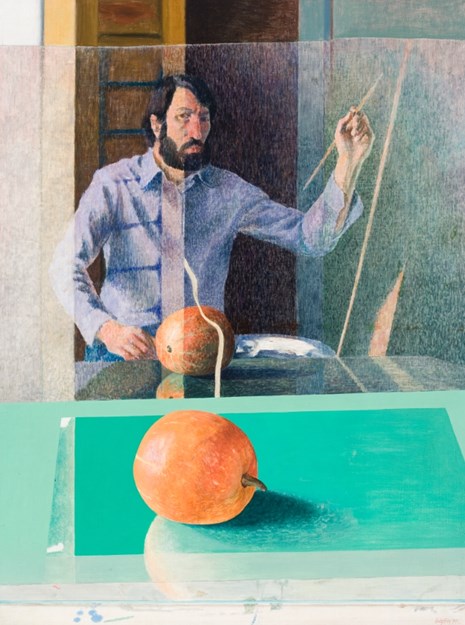Self-Portrait with a Watermeloncomes from an artist, carefully observing nature in all its aspects. Such a photorealist approach to the environment was rare in Lithuanian art in the 1970s. Švėgžda's attention to the objective world is shown in his paintings and drawings of his immediate surroundings: individual items and carefully arranged still-lifes.
In this picture, the painter shows himself through a glass screen, while his objects are presented from different viewpoints, including their reflections. The composition is painted in detailed, thinly layered brushwork, which reveals the different substances and textures. Instead of colour, which is most often underlined in painting, here light and its potential to construct form are brought into focus.
Although his way of looking carefully at objects and the essence of physical structures, which is reminiscent of Vermeer's work, forces the artist into the background, the artist's gaze remains the central axis of the self-portrait and its parts. He looks not just at the objects he paints, but also beyond the plane of the picture. The artist looks at us, asking what the reality is, and whether it is possible to portray it.



